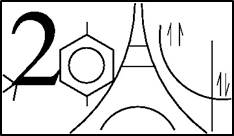Recently, we proposed a nonadiabatic scheme for the description of the coupled electronic and nuclear motion in ozone. An initial coherent nonstationary state was prepared as a superposition of the ground and the Hartley B states. In this situation neither the electrons nor the nuclei are in stationary state. The multiconfiguration time-dependent Hartree method was used to solve the coupled nuclear quantum dynamics in the framework of the adiabatic separation of the time-dependent (TD) Schrödinger equation. The resulting electronic wavepacket shows an oscillation between the two chemical bonds. In addition, a revival of the electronic coherence occurs after the pump pulse is off, which induces a second transfer of population between both states. To characterise the oscillation of the electron density we calculated the TD Dyson orbitals, molecular dipole, and photoelectron spectrum. We limited our description of the electronic motion to the Franck-Condon region because the nuclear wavepackets in both states stay localized around this point during the first 5-6 fs.
The objective is to show measurable quantities that will characterise the coherent evolution of the electronic wavepacket. We start with the TD dipole, as an observable that can be measured. The oscillatory time evolution of this dipole directly reflects the electronic coherence in the system and highlights the revival of coherence when the system is field free. As discussed in our previous work this is due to some trapping of the wavepacket in the B state. The oscillation of the dipole corresponds to a transfer of electron between the chemical bonds. This can be further characterized by TD Dyson orbitals that represent the exciton migration. Although these orbitals are not directly observable, they are key to compute the photoelectron spectrum that can be measured experimentally as a function of the time delay between the probe and the pump.
- Autre

 PDF version
PDF version
